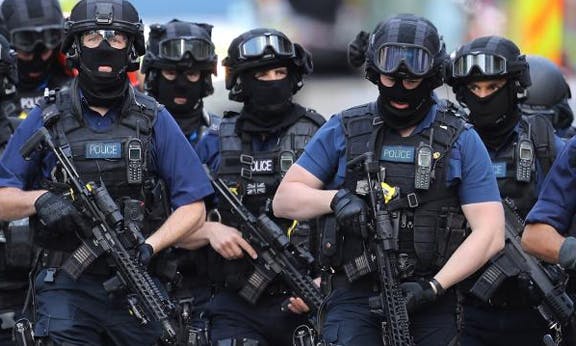No, really, why do police exist?

The police play a central role in society, but not the one we’re told they do. They are not there to uphold our rights and nor do they protect ordinary people. In fact, the vast majority of us would be far better off if the police did not exist.
The genesis of the modern police force provides a unique insight into the institution’s real function and purpose, which is not to create a more peaceful society, but to ensure the interests of capitalism through brute force.
Like many institutions in capitalist society, the apparent permanence of the police force hides the reality: it is a relatively new phenomenon. In the US, England and Australia, the modern force was formed only in the 19th century.
Before the police, a range of different institutions existed to enforce some order – usually called watches or constabularies in England and parts of the US. These were small, volunteer based and privately run, with nothing like the centralised apparatus of the modern police.
They were superseded by new institutions integrated into a centralised, bureaucratic state, with fixed departments and full-time employees.
In the US, this transformation took place from the 1830s onward. Eastern Kentucky University criminologist Dr Gary Potter summarised the pressures that led to the transformation: “The United States was no longer a collection of small cities and rural hamlets. Urbanisation was occurring at an ever-quickening pace and [the] old informal watch and constable system was no longer adequate to control disorder”.
Disorder, as always, was a loaded term. The police were created to prevent a particular kind of disorder and ensure a particular type of order, one “... defined by the mercantile interests, who through taxes and political influence supported the development of bureaucratic policing institutions. More than crime, modern police forces in the United States emerged as a response to ‘disorder’. These economic interests had a greater interest in social control than crime control. Private and for profit policing was too disorganised and too crime-specific in form to fulfil these needs. The emerging commercial elites needed a mechanism to ensure a stable and orderly work force, a stable and orderly environment for the conduct of business, and the maintenance of what they referred to as the ‘collective good’”.
In order to protect these economic interests, early northern US police work was focused on attacking workers – both breaking strikes and preventing workers from organising.
The structure of new police forces was shaped by and in response to the new working class. The institutions that were precursors to the police reacted to specific events or criminal acts, but capitalism required a much broader and more permanent institution. For the capitalist class, a big working class concentrated in cities required well-organised and centralised police departments, as well as constant patrolling and surveillance.
Members of the police also needed to stand above and apart from those they existed to control. The capitalists and governments that served them had to be certain, for example, that a police officer would not side with a strike. Volunteer-based organisations did not provide enough security. The new officers were made reliable largely through permanent full time employment and the nature of everyday police work, inculcating violence, domination and a sense of power and superiority. The integration of policing into the state helped ideologically, presenting police as upholding the “collective good” on one side, against unruly workers and “crime” on the other.
But capitalism in the US was not built only through large cities and working class exploitation – it was also based on slavery. In the northern states, modern police formed largely in response to working class rebellions. In the south, slave revolts drove the repressive apparatus. Precursors to the police in the north were watches and constabularies, while in the south they developed directly out of “slave patrols”. Members of the patrols spent their time repressing slave revolts or hunting down escaped slaves. The US police came into existence as a racist institution, and has remained so to this day.
It was a similar story outside the US. The London police force was founded in 1829, 10 years after the Peterloo revolt and massacre highlighted the danger of the new working class and the inability of old institutions of force to deal with the challenge.
In Australia, early police forces were formed out of the need to control the convicts building the new colony. The Night Watch in Sydney was created in 1789 to stop starving convict labourers stealing food as well as to force them to keep working under slave-like conditions. It recruited as officers convicts willing to cooperate with and protect the system that had originally enslaved them. The police force has always relied on turning the exploited into oppressors in this way, and individuals from working class origins into class traitors.
The building up of police power and resources today has as little to do with protecting people as it had when the police force was formed. Most Australian police are now equipped with semi-automatic rifles, 40-millimetre grenade launchers, stinger grenades, flash and noise devices, capsicum canister bombs, body armour and drones. These are not tools meant to prevent theft or interpersonal violence, but reflect the threat posed to the system by an already grossly unequal world spiralling toward climate catastrophe, and the inevitable rebellion this will bring.